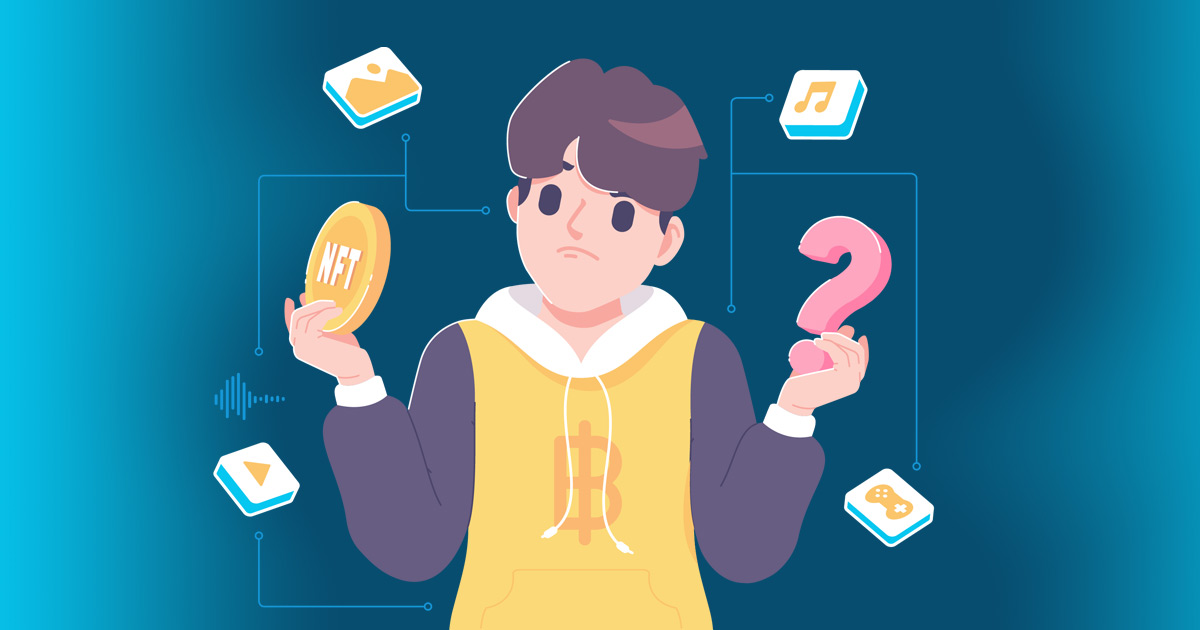
NFTs or non-fungible tokens have become so popular today that many people are thinking of “minting” one. This doesn’t come as a surprise because, in 2021, the NFT market surpassed over $40 billion in smart contracts. However, many are still in the dark about it, especially when they hear about these NFT-minting misconceptions. Let’s get to know what these are to help guide you in minting your own NFT art.
What is NFT Minting?
Minting an NFT refers to the process of converting digital assets into crypto collections recorded on the blockchain. These digital items or products will then be stored in a decentralized database or distributed ledger for all eternity, so to speak. This means that once the NFTs are stored, they can never be edited, deleted, or even modified.
The minting process lets the content creator earn royalties from the subsequent sale. When his work gets sold to another person or traded on a secondary market, he will receive a corresponding commission. And this is what most people are after.
NFT Minting Misconceptions
Now for the myths and misconceptions about NFT and its minting:
Misconception #1: NFT Minting is Bad for the Environment

Most NFT arts are on the Ethereum blockchain, which uses proof of stake mechanisms that expend energy. This means that minting, selling, and transferring NFTs use high energy consumption and generate vast amounts of carbon emissions. Crypto research company Messari, in its January 2022 report, confirms that the Bitcoin industry has emitted approximately 41 metric tons of CO2.
At first glance, this would seem like an exorbitant amount. But when you compare it to other industries, you’d see why all this is a big misconception:
Insert bitcoin co2 emission graph
In addition, eco-friendly proof-of-stake algorithms are gradually becoming the norm. Last year, Ethereum stated that its new version would use 99.95% less energy when it is complete.
Misconception #2: NFTs are Worthless

Skeptics argue that NFTs are merely certificates of authenticity or useless digital receipts. Once you copy the underlying item, such as a JPEG version of a CryptoPunk, it becomes devoid of value. They see NFT minting as similar to copying your favorite music on cassette tapes and then giving them away or selling them.
We can all agree that anything can have value when two or more people agree on something having value—even a block of wood or a piece of stone. A great example of this is baseball cards. The most expensive is a Honus Wagner, with a $3 million price tag.
As hard as it is to believe someone would pay that amount for a card with a picture of a ball player, someone did. Also, an excellent argument for NFTs’ worth is when people make money off them. Digital artists are given a chance to earn from their art through this channel, making it pointless to deem NFT minting as worthless.
Misconception #3: NFT Minting Makes You Rich Quick

News and stories about people getting rich from NFT minting abound on the internet. This may be the primary reason why the industry has seen quite the boom in such a short time. However, you may say this is a mere misconception, an exception to the rule.
According to Artnet, most NFT sales are just under $200 or less. In the same way that not all artists are Picassos or Van Goghs, NFT minting is not a get-rich-quick scheme. Only the remarkable few, such as Beeple or Pak, have become millionaires because of their works.
Misconception #4: All NFTs are a Scam

Like many industries involving the exchange of money, NFTs are not immune from fraudsters. It is an industry that lacks regulations and has a pseudo-anonymous nature, making it a haven for scammers. Add to that the NFT marketplaces that offer free minting services, allowing malicious users to plagiarize others’ works.
Like stock trading, you should know what to do to avoid scamming. Many people have gotten comfortable lives thanks to stock or cryptocurrency trading. It does not mean that the whole industry is terrible and to assume that all NFTs are a scam.
Misconception #5: NFT Minting is a Bad Investment

The NFT industry is a speculative market. People buy NFTs believing they will be valuable to someone else someday. We can say the same for art galleries, stock exchanges, and other speculative assets.
It becomes riskier for NFTs as they have this factor to overcome: the open editions of digital collectibles. This is the process of creating as many editions of a digital art equivalent to the number of willing buyers but for a limited time only.
In these instances, the scarcity factor is determined by the amount of time that they are available and not by the number of editions. These first editions typically come at lower prices. Then they hit the secondary market to give way to those who couldn’t buy the first time.
Also, these open editions led to some high-ticket items. This is the same way NBA Top Shot was overwhelmed with high demands for their basketball videos on the Flow blockchain. However, prices are expected to stabilize once buyers learn that these items have speculative value.
Misconception #6: NFT Minting is a Foolproof Way to Get Artists Paid

If you’re an artist and want a foolproof channel to get paid for your work, NFT minting isn’t the way. Actually, in whatever profession or endeavor, there is always that possibility that you won’t get paid. NFTs are not copyrights, according to TechCrunch. So, it’s possible that an artist’s work can get stolen and minted, with someone else getting paid for the artwork.
Final Thoughts
Beginners in NFT minting should practice due diligence when starting. Most people get the shorter end of the stick due to a lack of information and knowledge. The best way to do this is to research and learn more about the system’s workings. This list of misconceptions can help you get on your way to avoiding as many problems as you can.
And if you want to get your hands on some artwork that you can mint into NFTs, Penji is your best bet. Have our graphic designers work for you and get as many illustrations, art, and design as you can in a month for a fixed, flat rate. Watch our demo video here or sign up through this link to get started.
About the author

Celeste Zosimo
Celeste is a former traditional animator and now an SEO content writer specializing in graphic design and marketing topics. When she's not writing or ranking her articles, she's being bossed around by her cat and two dogs.
Table of Contents
- What is NFT Minting?
- NFT Minting Misconceptions
- Misconception #1: NFT Minting is Bad for the Environment
- Misconception #2: NFTs are Worthless
- Misconception #3: NFT Minting Makes You Rich Quick
- Misconception #4: All NFTs are a Scam
- Misconception #5: NFT Minting is a Bad Investment
- Misconception #6: NFT Minting is a Foolproof Way to Get Artists Paid
- Final Thoughts








